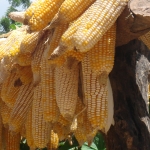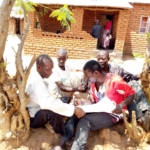


Lilongwe University of Agriculture and Natural Resources
University of Greenwich
Uganda, Kenya, and Ethiopia
8/2014—8/2018
Productivity on smallholder farms in Malawi is extremely low. Yields of the main subsistence crop, maize, are substantially below what could be achieved with improved crop management. Soil fertility is declining and so the productive capacity of farms is being eroded. Individual land holdings are small and in many areas only one crop can be grown per year. As a result, a large number of people do not produce enough food to meet their needs. They also lack diversity in their diets and this has adverse impacts on their health. The incidence of stunting in children under five years of age averages 46%. The aim has been to achieve multiple benefits of improved soil fertility, enhanced crop productivity, and better family nutrition. Farmers in the target areas have shown interest in growing a groundnut-pigeon pea intercrop in rotation with maize. This system saves labor, adds nitrogen to the soil and thus increases the yield of the maize crop, and contributes to more diverse diets for farming households. One of the challenges identified during the research is that the performance of legume systems varies between and within locations. This is thought to be due to a combination of biophysical and socioeconomic factors, but the way that these factors influence system performance is not well understood. The project team aims to use multi-environment trials (METs) to develop a better understanding of the factors influencing variability in the performance of maize-legume cropping systems in Malawi. This will be done through: 1. Farmer experimentation with integrated soil fertility management (ISFM) technologies 2. Promotion of improved diets through increased consumption of legumes 3. The testing of different models for networking farmer research groups 4. Influencing policies on ISFM and associated issues through engaging with policy makers in suitable fora and by producing policy briefs 5. Using studentships to carry out some of the research and increase capacity in priority disciplines.
To increase agricultural production and total farm productivity in multi environmentsTo improve soil healthTo improve nutritional diversity of farm families, particularly under-5 children and pregnant womenTo strengthen innovation based on farmer-led priorities and farmer evaluated technologiesTo increase policy-maker awareness and understanding of ISFM and legume policy issuesTo increase researcher and partner capacity in AIS, MET, FRN
Integrate soil fertility management combinations involving legume cropping systems and 24 kg N ha-1 (a quarter of the recommended N fertilizer rate for maize in Malawi) increased the yield of subsequent maize by 70-200% over unfertilized continuous maize thereby reducing the reliance on inorganic fertilizer.Six recipe days were organized by the Farmer Research Team members and community promoters in Ekwendeni, Northern Malawi, in 2014. The recipe days involved sharing of different cooking methods of the locally produced crops including legumes, and providing nutritional education on child feeding practices. A total of 334 female and 168 male farmers were traine

